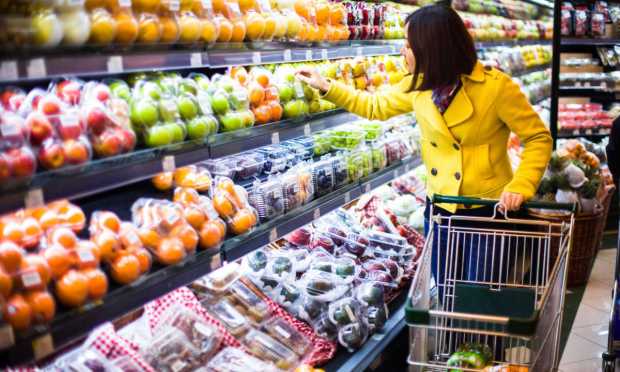Grocers Turn to Retail Media to Supplement Consumer Revenue

This week in grocery, grocers tapped retail media, and a U.K. grocer tested robotic delivery.
BJ’s Wholesale Club, for one, a membership-only warehouse club chain with 234 locations across 18 states, announced Thursday (Dec. 1) that it is launching BJ’s Media Edge, a Microsoft PromoteIQ-powered advertising initiative offering analytics-informed web, mobile and social media marketing solutions to brands.
Such moves enable grocers to boost their revenue at a time when rising prices are putting pressure on margins.
“We designed this program to leverage the power of first-party data from our highly engaged 6.5 million members,” said Monica Schwartz, chief digital officer at BJ’s, said in a statement. “This new program builds upon our existing digital marketing offerings with a customizable solution for brand partners to influence our members at every stage of their purchase journey, all while driving measurable returns.”
BJ’s is not the only grocery retailer growing its media offerings, promising brands a way to drive sales in the face of consumers’ inflation-related tradedown. Grocery giant Kroger has been expanding its Kroger Precision Marketing (KPM) ad solutions to include in-store media.
“We are constantly innovating to expand our reach, and KPM recently increased its programmatic advertising marketplace capabilities to include video and one of the fastest-growing digital media sectors, connected TV,” Kroger Chief Financial Officer Gary Millerchip told analysts on a call Thursday discussing the grocer’s third-quarter 2022 earnings report.
Indeed, as rising prices put pressure on grocery-focused businesses’ margins, many have been growing their ad offerings. In addition to these retail media network efforts, aggregator Instacart announced the launch of a suite of advertising offerings for consumer packaged goods (CPG) brands centered on deals and promotions.
Kroger Sees 10% YoY Private Label Sales Growth
In additional Kroger earnings news, the retailer, which is the largest pure-play grocer in the United States, has been seeing consumers turn to its private-label offerings as rising prices have them steering clear of their usual favorite brands.
“We are seeing more customers engage with our brands as a way to stretch their food budgets without compromising on quality,” CEO Rodney McMullen noted on the call.
This observation comes in spite of leading CPG brands maintaining that they are not losing significant share to private-label competitors. Yet Kroger, among other retailers, noted that inflation does have many consumers shifting their spending away from name brands toward lower-priced alternatives.
“Our brands continue to resonate deeply with customers as sales grew 10.4%,” said Millerchip. “The outstanding quality and value offered by these exclusive-to-Kroger products is an important differentiator in our go-to-market strategy, and this is especially true during periods of high inflation.”
Indeed, research from the October edition of the Consumer Inflation Sentiment study, “Consumer Inflation Sentiment: Consumers Buckle Down on Belt-Tightening,” for which PYMNTS surveyed more than 2,600 consumers in September, revealed that 37% of grocery shoppers reported purchasing lower quality products to reduce their expenses in the face of inflation.
Grocers Deliver via Robot in Leeds
As grocers look to meet delivery demand without losing too much on the cost of driver labor, some are turning to robotics.
In Leeds, England, retail group the Co-op has partnered with the area’s city council and with automated vehicle provider Starship Technologies on grocery delivery via rover robot, the BBC reported Thursday.
“We are confident the robots will make a positive impact in terms of actively reducing traffic congestion and carbon emissions, while also providing ease and convenience for local communities,” Starship CEO Alastair Westgarth said, per the report.
Finding cost-effective solutions for delivery is especially key in the United Kingdom, where consumers are disproportionately likely to order via the channel, according to data from PYMNTS’ study “The 2022 Global Digital Shopping Playbook: United Kingdom Edition,” created in collaboration with Cybersource.
The report, which drew from a survey of more than 13,000 consumers across six countries, found that 78% of Brits had their most recent eCommerce purchase delivered to their homes, a greater share than any other country surveyed and well above the cross-sample average of 71%.
